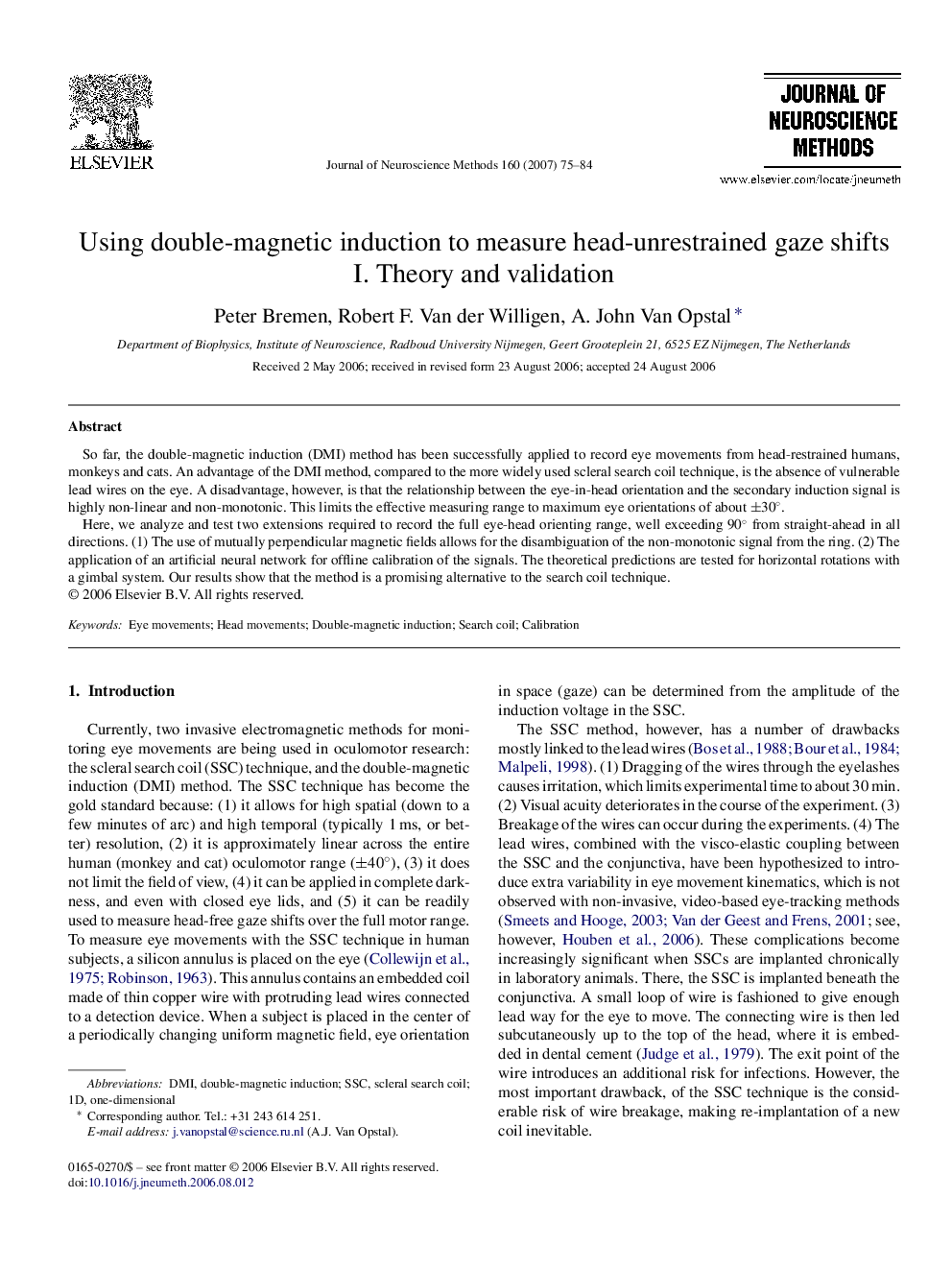| Article ID | Journal | Published Year | Pages | File Type |
|---|---|---|---|---|
| 4336807 | Journal of Neuroscience Methods | 2007 | 10 Pages |
So far, the double-magnetic induction (DMI) method has been successfully applied to record eye movements from head-restrained humans, monkeys and cats. An advantage of the DMI method, compared to the more widely used scleral search coil technique, is the absence of vulnerable lead wires on the eye. A disadvantage, however, is that the relationship between the eye-in-head orientation and the secondary induction signal is highly non-linear and non-monotonic. This limits the effective measuring range to maximum eye orientations of about ±30°.Here, we analyze and test two extensions required to record the full eye-head orienting range, well exceeding 90° from straight-ahead in all directions. (1) The use of mutually perpendicular magnetic fields allows for the disambiguation of the non-monotonic signal from the ring. (2) The application of an artificial neural network for offline calibration of the signals. The theoretical predictions are tested for horizontal rotations with a gimbal system. Our results show that the method is a promising alternative to the search coil technique.
